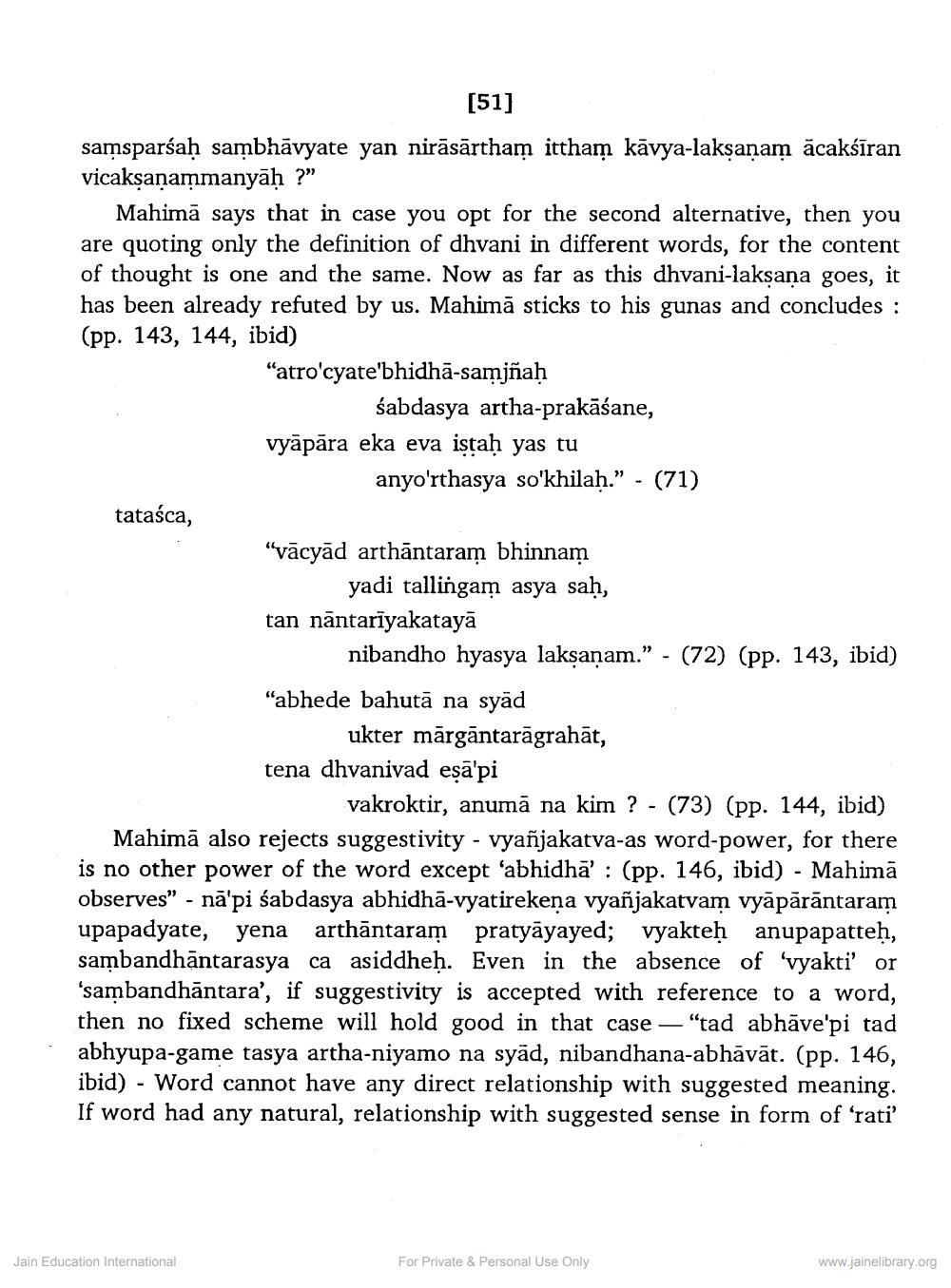________________
[51]
samsparśaḥ sambhavyate yan nirāsārtham ittham kāvya-laksanam acakšīran vicakṣaṇammanyāḥ ?"
Mahimā says that in case you opt for the second alternative, then you are quoting only the definition of dhvani in different words, for the content of thought is one and the same. Now as far as this dhvani-laksana goes, it has been already refuted by us. Mahimā sticks to his gunas and concludes : (pp. 143, 144, ibid)
"atro'cyate'bhidhā-samjñaḥ
sabdasya artha-prakāśane, vyāpāra eka eva istah yas tu
anyo'rthasya so'khilah." - (71) tatasca,
"vācyād arthāntaram bhinnam
yadi tallingam asya sah, tan nāntariyakatayā
nibandho hyasya laksanam.” - (72) (pp. 143, ibid) "abhede bahutā na syad
ukter mārgāntarāgrahāt, tena dhvanivad esā'pi
vakroktir, anumā na kim ? - (73) (pp. 144, ibid) Mahimā also rejects suggestivity - vyañjakarva-as word-power, for there is no other power of the word except 'abhidha': (pp. 146, ibid) - Mahimā observes” - nā'pi śabdasya abhidhā-vyatirekena vyañjakatvam vyāpārāntaram upapadyate, yena arthāntaram pratyāyayed; vyakteḥ anupapatteh, sambandhāntarasya ca asiddheh. Even in the absence of 'vyakti' or 'sambandhāntara', if suggestivity is accepted with reference to a word, then no fixed scheme will hold good in that case — "tad abhāve'pi tad abhyupa-game tasya artha-niyamo na syād, nibandhana-abhāvāt. (pp. 146, ibid) - Word cannot have any direct relationship with suggested meaning. If word had any natural, relationship with suggested sense in form of ‘rati'
Jain Education International
For Private & Personal Use Only
www.jainelibrary.org




